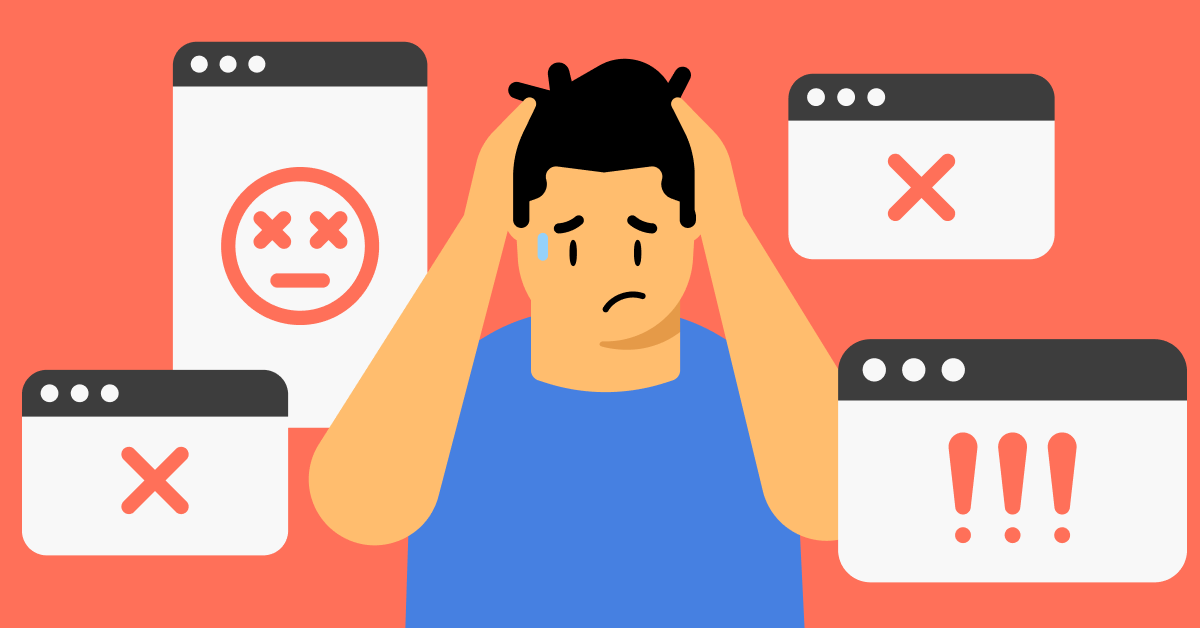What is HTTP, and how does it work?
Have you ever entered a website URL on your browser and wondered what HTTP stands for? That seemingly insignificant bit of text is one of the essential building blocks of how we use the web. This article presents what HTTP is, how it works, and what we use it for.
Contents
What is HTTP?
HTTP definition
An application layer protocol for distributing information between networked devices. On the internet, HTTP serves as a set of rules for web servers to provide browsers with everything they need to display a website on the user’s screen.
HyperText Transfer Protocol (HTTP), a TCP/IP family member, is the underlying application layer protocol for communication over the World Wide Web. It enables the exchange of information between a client (a web browser) and a server. HTTP is like a language that allows the web browser and the server to understand and interact with each other. HTTP forms the foundation of how information is requested, transmitted, and delivered over the internet.
HTTP2 (or HTTP/2) and HTTP3 (or HTTP/3) are the newer versions of the HTTP protocol. HTTP2 was developed to improve HTTP’s performance; it was standardized in 2015. Next came HTTP3. Standardized in 2022, HTTP3 made web communication even more efficient for all users.
How does HTTP work?
The HyperText Transfer Protocol works on a request-response basis, where the client (usually a web browser or an application) sends a request to a web server. The server then responds to that request by providing the necessary data.
For example, when you enter an URL address in your browser address bar and hit “Enter,” the browser sends an HTTP request to the server hosting that web page. The server processes the request and sends back an HTTP response containing the requested information, for example, information needed to load a website. The browser then receives and processes the response — this is how a web page appears on your browser screen.
This exchange of requests and responses lets clients retrieve web pages, send data to servers, and perform operations over the internet.
What is an HTTP request?
An HTTP request is the message that a client (a web browser) sends to a server, asking for a specific action or resource, for example, for the information needed to load a website. An HTTP request consists of several components that carry the necessary information for the server to process the request and provide an appropriate response. Here are the components of an HTTP request:
- A request line. A request line contains the HTTP method (GET, POST, PUT, or DELETE), indicating the desired action, the target URL or resource path, indicating the location of the web resources, and the version of the HTTP protocol.
- A request header. A request header contains additional information and metadata about the request: the browser type, accepted content types, user-agent information, authentication tokens, and cookies.
- A request body. A request body is an optional component in an HTTP request, carrying additional information the client sends to the server. This component tells the server something specific, like submitting a form, sending data to update a profile, or uploading a file.
What is an HTTP response?
An HTTP response is a message a server sends to the client in response to an HTTP request. It contains the data requested by the client, additional metadata, and status information about the success or failure of the request. HTTP responses typically include the following information:
- A status line indicates the status of the request to the client device. It is the first line of the response that includes the HTTP version, the status code, and the status message.
- A response header contains metadata and additional information about the server’s response to the client’s request, such as content type, length, or caching directives.
- A blank line. A single blank line separates the response header from the response body.
- A response body (optional) contains the data that the server sends back to the client. If the request is successful, it includes the requested data in the HTML, JSON, or XML format, or it can contain an image or any data based on the request and the server’s capabilities.
What is an HTTP status code?
An HTTP status code is a message a web server sends to the client after processing its request to inform if it can fulfill the request.
The HTTP status code is a three-digit numerical code that a web server includes in its response to the client. The status code informs the client about the outcome of the HTTP request — if the request was successful, redirected, or encountered an error. Therefore, there are five status code classes: informational, successful, redirection, client errors, and server errors.
These are some of the most common HTTP status codes that you might have already encountered:
- 200 OK. The request was successful, and the server has provided the requested data.
- 301 Moved Permanently. The URL of the requested resource has been permanently changed.
- 400 Bad Request. The server cannot understand the client’s request.
- 401 Unauthorized. The client does not have proper authentication credentials to access a resource on the server.
- 403 Forbidden. The client’s identity is known, but they do not have permission to access the requested resource.
- 404 Not Found. You have probably encountered this error code before. It means that the resource could not be found on the server.
- 500 Internal Server Error. The server cannot fulfill the request because it has encountered a condition it doesn’t know how to handle.
- 502 Bad Gateway. The server cannot communicate with the upstream (host) server.
HTTP vs. HTTPS
HyperText Transfer Protocol (HTTP) and HyperText Transfer Protocol Secure (HTTPS) are both protocols used for transferring data over the network. The main difference between the two is the level of security they provide — HTTPS is far more secure than HTTP:
- Data encryption. The HTTPS protocol encrypts the data transmitted between the client and the server by converting it into an unreadable format to protect it from unauthorized parties.
- SSL/TLS. HTTPS uses the SSL/TLS protocol to secure the client and server connection. These protocols ensure that the data in transit remains private and untampered. Of the two, TLS is the more advanced one and provides a higher level of security.
- Authentication. When you visit a website, HTTPS authenticates it to verify that your browser is connected to the correct website. This authentication type helps to ensure you are communicating with the intended server and prevent man-in-the-middle attacks.
- Data integrity. If HTTPS detects that the data exchanged between the client and the server has been altered by unauthorized parties, the server closes the connection and terminates the communication.
HTTP proxies
An HTTP proxy is an intermediary server to which you can route your internet traffic and conceal your IP address. It acts as a gateway between the client and the web server, handling client requests and web server responses.
When a client requests to access a website, the request first goes to the proxy. The proxy then forwards the request to the web server. The web server’s response also goes through the proxy, which delivers it to the client.
HTTP proxies improve privacy by hiding the client’s IP address and preventing your internet service provider from seeing what pages you visit. They can also store copies of web pages and resources to reduce the load on web servers and help clients access the websites faster. They can also bypass some internet restrictions, making more content available for the users.

